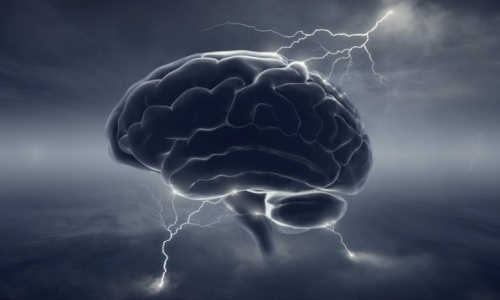The brain’s alphabet is a mix of rate and precise timing of electrical pulses: the observation was made by researchers at the International School for Advanced Studies (SISSA) of Trieste and the Italian Institute of Technology (IIT) of Rovereto, and has been published in the international journal Current Biology. The study shows that the nervous system features a “multichannel” language that makes up the neural code, or the alphabet that processes information in the brain.
Nerve signals consist of sequences of electrical pulses (“spikes”) that travel along communication channels, or neural circuits. What alphabet do these sequences use to transmit the information? In other words, what makes up the brain’s language? According to a new study published in Current Biology, the information is contained in both the rate and the precise, detailed temporal distribution of pulses. To distinguish one message from another, the rate of spikes varies over a relatively long time span of tens of milliseconds. This “spike rate code” has been known for many years. What’s new is the demonstration of a “spike timing code” operating on a millisecond scale. In addition, the research found that, contrary to what was thought until now, spike timing may be even more influential than spike rate, and that the two codes complement each other to form a more informative message. The study was coordinated by Mathew Diamond, professor at SISSA in Trieste, and Stefano Panzeri, research team leader at the Centre for Neuroscience and Cognitive Systems of the IIT in Rovereto.
“The two coding systems, one based on spike rate and the other on timing, give rise to multiple channels along the same transmission line”, explains Diamond. “If we take tactile sensation, for example, the brain uses these multiple channels to communicate aspects of the stimulus – intensity of the touch, texture of the surface, shape of the object and so on – which could not be conveyed by a single communication channel” adds Panzeri.
“We demonstrated that, contrary to what was believed until now, the exact timing of spikes encodes highly important information that complements and surpasses, in our experiments, the information conveyed by spike rate”, explains Diamond. “The timing of spikes for example, provides a greater amount of information since the potential number of messages exceeds that produced by rate alone. And the timing of spikes leads to the brain’s final interpretation of the stimulus”.
“Thanks to this discovery we have a greater understanding of how to imitate the brain’s language, and hence reproduce it”, concludes Stefano Panzeri. “We can, in fact, foresee developing robotic prostheses, such as limbs for amputees, capable of communicating with the brain in a complex, bi-directional manner, so as to restore not only motor function but also the senses, like the sense of touch”.
More in detail…
In the experiments conducted during the study rats explored surfaces of varying texture with their whiskers. Discrimination of the surface texture generated neural activity in the cortex of the brain, which the researchers recorded and analysed. The study showed not only that the spike timing conveyed a greater amount of information than spike rate alone, but also that the combination of the two channels was more accurate than either taken separately.
“We discovered that the brain encodes part of the information at very fast time scales, in particular in pulse sequences emitted with precision better than 5 milliseconds,” concludes Panzeri. “Another part of the information is instead encoded at a slower time scale, with the pulses transmitting the message over tens of milliseconds. The message is the same, of course, but it is read at two different resolutions, as if the brain were first viewing it through a naked eye and then through a magnifying glass” .
“Our results indicate that information transmitted through the detailed timing of spikes should not be underestimated, and that the nervous system communicates by opening several channels to convey every message”, comments Diamond. “This is probably one of the secrets underlying the richness of our perceptions”.
Story Source:
The above story is based on materials provided by Sissa Medialab.





